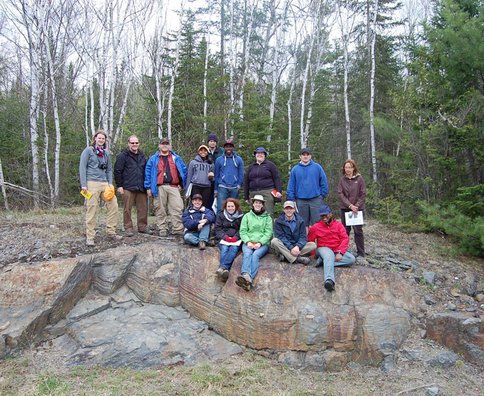2012 Annual Science Report
 Pennsylvania State University
Reporting | SEP 2011 – AUG 2012
Pennsylvania State University
Reporting | SEP 2011 – AUG 2012
EPO Activity: EPO: Summer Experiences for Higher Education Students
Project Progress
The Penn State Astrobiology Research Center (PSARC) partnered with the NASA Space Grant Consortium to recruit one undergraduate to work in a PSARC lab on the Penn State campus for 10 weeks during the summer. In summer 2012, Jenny Verniero, a resident of New Jersey and a student at American University in the District of Columbia joined the lab group of Dr. Matt Fantle and studied transport methods as an analog to Mars. Her summer support was split between the PSARC group and the DC Space Grant office.
Also, during the maymester 2012, two faculty from PSARC (Drs. House and Ohmoto) offered ABIOL 570, a field course for undergraduate and graduate students. PSARC again partnered with the Space Grant Consortium, and three students from HBCUs were invited to participate at a reduced rate. The 10-day field course involved a trip to Canada where the students visited sites that have played important roles in developing the concept of “the Great Oxidation Event” and have provided important clues for the evolution of the early biosphere, including the banded iron formations, the ~1.8 Ga Gunflint Formation with one of the oldest microfossils of cyanobacteria and eukaryotes, ~2.9 Ga stromatolites, and the 1.8 Ga meteorite impact at Sudbury and its biological effects.
Ten Penn State students, one student from Lincoln University and two students from Howard University participate in ABIOL 570, a 10-day field course in Canada to study sites that have played important roles in developing the concept of “the Great Oxidation Event” and have provided important clues for the evolution of the early biosphere.
